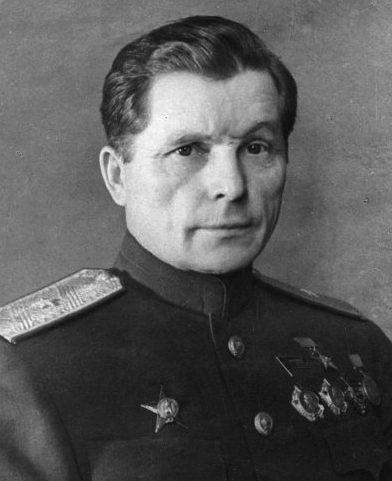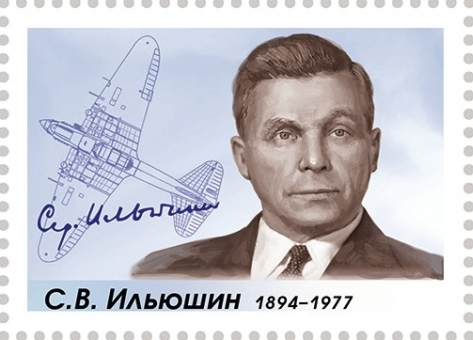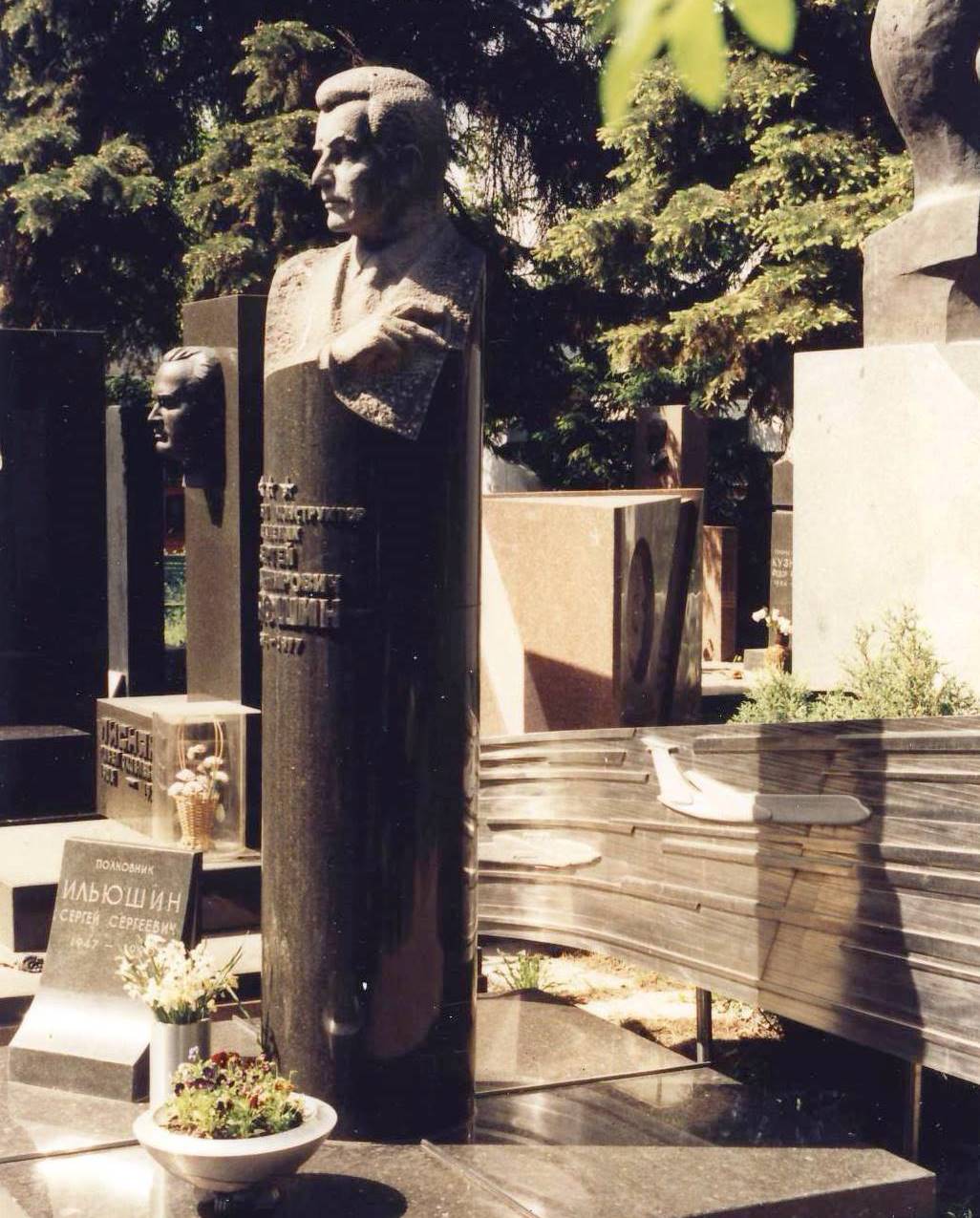1. Overview

Sergey Vladimirovich Ilyushin (Сергей Владимирович ИльюшинSergey Vladimirovich IlyushinRussian) was a highly influential Soviet aircraft designer who made monumental contributions to both military and civilian aviation. As the founder of the Ilyushin aircraft design bureau, he was responsible for developing some of the most enduring and successful aircraft of the Soviet era. His designs, particularly the Il-2 Shturmovik ground-attack aircraft, played a critical role during World War II, becoming the most produced combat aircraft in history. Following the war, Ilyushin shifted his focus to commercial aviation, leading the development of iconic airliners such as the Ilyushin Il-18 and Ilyushin Il-62, which facilitated extensive air travel within the Soviet Union and among its client states. His distinguished career, marked by innovation and strategic importance, earned him numerous state awards and recognition, cementing his legacy as a pivotal figure in aviation history.
2. Early Life
Sergey Ilyushin's early life was characterized by humble beginnings and diverse work experiences that ultimately led him to the field of aviation.
2.1. Birth and childhood
Sergey Vladimirovich Ilyushin was born on March 30, 1894 (March 18, 1894, according to the Julian calendar) in the village of Dilyalevo in the Vologda Governorate of the Russian Empire. He was the youngest of 11 children born into a peasant family. Largely self-taught, Ilyushin left his home at an early age to seek work. His early jobs included working as a factory laborer, a ditch-digger at construction sites, and a cleaner of gutters at a dye plant in Saint Petersburg. In 1910, he found employment as a groundskeeper at Kolomyazhsky Racetrack, which also hosted the first All-Russia Festival of Ballooning in the autumn of that year. During this event, Ilyushin assisted in unpacking crates and setting up equipment, which allowed him to meet many pioneering Russian aviators and ignited his interest in aviation. In 1911, he returned to his native village to work as a carter for a dairy plant. The following year, he was employed as a construction worker for the Amur Railway, and in 1913, he worked in a shipyard in Tallinn.
2.2. Education and early aviation interest
With the outbreak of World War I in 1914, Ilyushin was conscripted into the Imperial Russian Army. He initially served with the infantry but was later assigned as a clerk in the military administration of Vologda due to his literacy. When an opportunity arose for volunteers to join the nascent Aviation Section, Ilyushin promptly volunteered. He began his service working as a mechanic and a member of the ground crew. By the summer of 1917, he successfully qualified as a pilot.
In March 1918, following the withdrawal of the Bolshevik government from the war, Ilyushin was demobilized and returned to his native village. He became involved in overseeing the increasing nationalization of factories in the area and, in October 1918, officially joined the Bolshevik Party. With the onset of the Russian Civil War, Ilyushin was drafted into the Red Army in May 1919, where he served as an aviation technician for the VVS RKKA (Red Army Air Force). In the autumn of that year, a White movement Avro 504 biplane made a forced landing near Petrozavodsk. Ilyushin led a team tasked with dismantling the aircraft and sending it to Moscow, where it was successfully reverse-engineered into the U-1 trainer. A significant number of U-1 trainers, 737 examples, were subsequently built based on this design.
In the autumn of 1921, Ilyushin left military service and on September 21, 1921, he enrolled in the Institute of Engineers of the Red Air Fleet, which was later renamed the Zhukovsky Air Force Engineering Academy on September 9, 1922. During his academic years, he specialized in the design of gliders and participated in numerous competitions. In 1925, one of his glider designs was submitted to a competition in Germany, where it secured first prize for its flight time. Ilyushin successfully obtained an engineering degree in 1926.
3. Aviation Career and Major Contributions
Sergey Ilyushin's career as an aircraft designer spanned several decades, during which he founded his own design bureau and made profound contributions to both military and commercial aviation, leaving an indelible mark on Soviet aviation history.
3.1. Founding the Ilyushin Design Bureau
After earning his engineering degree in 1926, Ilyushin served until November 1931 as an aeroplanes section manager within the Soviet Air Force Scientific-Technical Committee. In this role, he was actively involved in developing the design requirements for new aircraft crafted by prominent designers such as Nikolai Polikarpov and Andrei Tupolev. During this period, he was also appointed Assistant Chief of the Air Force Research and Test Institute. At his own request, in November 1931, he was reassigned to the TsAGI Design Bureau, where he worked until 1933. In 1933, Ilyushin was appointed chief of the TsKB at the V.R. Menzhinski Moscow plant. This organization subsequently evolved into the renowned Ilyushin OKB (design bureau) in 1935, becoming a major global brand responsible for all Soviet aircraft abbreviated with the "IL-" prefix.
3.2. World War II aircraft designs
During World War II, Ilyushin played a critical role in the Soviet war effort through his innovative military aircraft designs. His most notable contribution was the single-engined Ilyushin Il-2 ground-attack aircraft, famously known as the Il-2 Shturmovik. This aircraft achieved the distinction of being the single most-produced combat aircraft design in history, with an astounding 36,183 examples built. It remains the second most-produced aircraft in history, surpassed only by the American Cessna 172.
Another crucial design was the Ilyushin Il-4 twin-engined bomber, of which just over 5,200 examples were produced. Both the Il-2 and Il-4 were extensively used by the Red Army Air Force on all fronts where the Soviets fought, proving their effectiveness and reliability in combat and contributing significantly to Soviet military victories.
3.3. Post-war commercial aircraft development
Following the end of World War II, Ilyushin shifted his primary focus from military to commercial aviation, leading the development of several successful passenger airliners. Among these, the Ilyushin Il-18 and Ilyushin Il-62 were particularly significant. These aircraft saw extensive use with Aeroflot, the Soviet national airline, and were widely adopted by numerous Soviet client states. The Il-18, a four-engine turboprop, became a workhorse for medium-range routes, while the Il-62, a long-range jet airliner, enabled expanded international air travel for the Soviet Union, significantly impacting Soviet and international air transport.
3.4. Public and academic roles
Beyond his design work, Sergey Ilyushin was also a prominent figure in Soviet public and academic life. From 1937 to 1970, he served as a deputy of the Supreme Soviet of the Soviet Union, reflecting his political influence and standing within the Soviet system. In 1967, he was given the honorary rank of General-Colonel of Engineering/Technical Service, acknowledging his profound technical expertise and leadership. In 1968, he was elected an Academician of the Academy of Sciences of the Soviet Union, the highest scientific honor in the country. Ilyushin remained the chief designer at the Ilyushin OKB until his retirement in 1970, which was necessitated by illness.
4. Awards and Honors
Sergey Ilyushin received numerous high-level awards, state prizes, and honorary titles from the Soviet Union and international organizations, recognizing his outstanding contributions to aviation and national defense.

His major accolades include:
- Hero of Socialist Labour: Awarded three times, in 1941, 1957, and 1974, for exceptional contributions to the Soviet state.
- Stalin Prize: Received seven times, in 1941, 1942, 1943, 1946, 1947, 1950, and 1952, for his pioneering aircraft designs.
- USSR State Prize: Awarded in 1971.
- Lenin Prize: Received in 1960.
- Order of Lenin: Awarded nine times, in 1937, 1941, 1945, twice in 1954, 1964, 1971, and 1974, making him one of the most decorated individuals in Soviet history.
- Order of Suvorov: Awarded both the 1st and 2nd class, in 1945 and 1944 respectively, recognizing his leadership in military aviation.
- Order of the October Revolution: Received in 1969.
- Order of the Red Banner: Awarded in 1944 and 1950.
- Order of the Red Banner of Labour: Received in 1939.
- Order of the Red Star: Awarded in 1933 and 1967.
- International Air & Space Hall of Fame: Inducted in 2006, recognizing his global impact on aviation.
5. Personal Life
Sergey Ilyushin's personal life included two marriages and several children. His first wife was Raisa Mikhailovna Zhalkovskaya (1897-1972), whom he married in Vologda on June 4, 1919. From this marriage, he had a son, Vladimir Sergeevich Ilyushin (1927-2010), who became a renowned test pilot and a Hero of the Soviet Union, achieving the rank of Air Force Major General. His daughter, Irina Sergeevna Ilyushina (1920-2007), also married the vice-president of the Academy of Medical Sciences (AMN), Orekhovich.
Ilyushin's second wife was Anastasia Vasilyevna Sovetova (1915-2008), who worked as a design engineer. They had two sons: Sergey Sergeyevich Ilyushin (1947-1990), who became an engineer, and Alexander Sergeyevich Ilyushin (born 1955). Sergey Alexandrovich Ilyushin (1985-2002) was his grandson.
6. Death
Sergey Vladimirovich Ilyushin died on February 9, 1977, in Moscow, following his retirement due to illness in 1970. He was laid to rest at the prestigious Novodevichy Cemetery in Moscow, a burial site reserved for prominent figures in Russian history.

7. Legacy and Commemoration
Sergey Ilyushin's profound impact on aviation continues to be recognized and commemorated through various memorials, monuments, and other tributes across Russia.
7.1. Memorials and monuments
Several physical memorials and monuments stand as testaments to Sergey Ilyushin's legacy. The house in which he lived during his summer vacations in the 1950s and 1970s has been preserved in his native village of Dilyalevo. In the village of Mozhaiskoye, located approximately 7.5 mile (12 km) from Vologda, the House Museum of Alexander Mozhaysky features an extensive exposition dedicated to Ilyushin's life and work. Additionally, materials pertaining to his life and contributions are presented in the Hall of Military Glory at the Kubenskoye Regional Museum of Local Lore.
Bronze busts of Sergey Ilyushin have been installed in significant locations. One such bust in Vologda, situated at the intersection of Mira and Blagoveshchenskaya Streets, was unveiled on January 17, 1977. It was created by sculptor O. M. Maziner with architect I. Rozhin. Another bronze bust stands in Moscow. In 1984, an Ilyushin Il-28 monument, dedicated to Ilyushin as its creator, was erected in Vologda on Ilyushin Street. More recently, on May 8, 2020, a monument to Sergey V. Ilyushin was unveiled in the village of Bereznik in the Vologda Oblast.
7.2. Other tributes and recognition
Beyond physical monuments, Sergey Ilyushin's name has been honored in various other ways. Several streets in major Russian cities bear his name, including Moscow, Saint Petersburg, Voronezh, Vologda, Tyumen, and Kubenskoye. His image has also been featured on postage stamps, reflecting his national recognition. In 1984, the USSR issued a postage stamp dedicated to Ilyushin, coinciding with the 90th anniversary of his birth. More recently, in 2019, Russia issued a postal block featuring his likeness, further commemorating his enduring contributions to aviation.